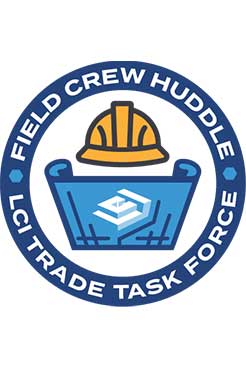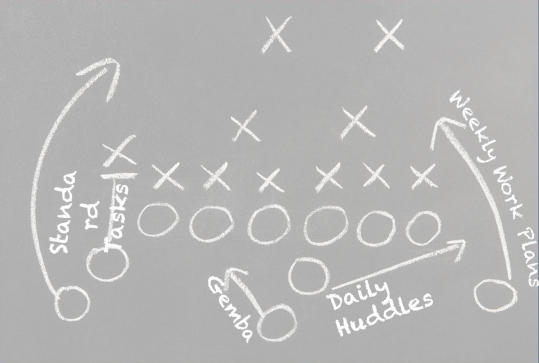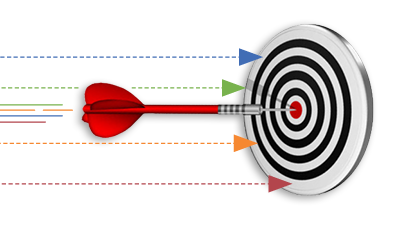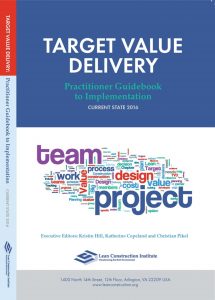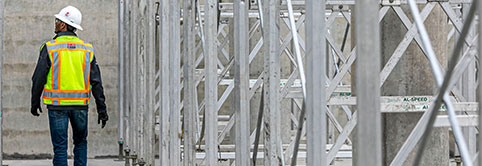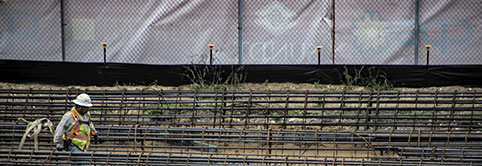Daily Huddle
Intro to Daily Huddles
Communication and collaboration are keys to any Lean enterprise. Ultimately, just over half of all work that is laid out in a Weekly Work Plan actually gets completed for the week. Waste is common in design and construction processes, backing up timelines and causing financial hardship across the project and often resulting in owners shelling out more money than they had initially anticipated.
A daily huddle is a quick but effective communication tool that many design, construction, and trade companies swear by to keep their team on track to meet their weekly goals and to minimize overhead costs.
What is a Daily Huddle?
A daily huddle is a daily check-in for members of a team. It is a method to communicate and measure progress of a team’s work plan. Daily huddles allow members to tackle problems prior to missing goals. They also allow the team to review accomplishments from the previous day and to set expectations for the coming day.
Team Huddles, Daily
One of the most common types of waste found in construction projects is waiting time. Oftentimes, workers encounter issues on the job that prevent them from moving forward, then decide to wait until the next weekly meeting to address it. Daily huddles allow workers to have that face-to-face discussion before the next weekly meeting so they can continue with their work.
Meeting Format
Daily huddle meetings are designed to be 10-15 minute sessions that are held where the work is being done. Some huddles can be even shorter than that in length. It’s important to note that daily huddles are meant to provide minor adjustments and recalibrations, not prolonged discussions regarding singular issues a particular trade is experiencing.
If a team member or trade has an issue to bring up, that should lead to a brief discussion of where and when to have a conversation to resolve the issue. Huddles are frequently derailed when team members dive into problems that do not involve everyone in the meeting, wasting the time of those who could be working.
Benefits of a Daily Huddle
Organizations that utilize daily huddles find a notable spike in their productivity; on average, those organizations are 30% more productive than those that do not have daily huddles. Other benefits from incorporating daily huddles into the workflow include:
Coordination
Team members can use huddles to coordinate handoffs and clarify roles for the day’s tasks. Done correctly, daily huddles ensure that nobody on the project suffers from a miscommunication that could lead to waste.
Planning
As circumstances change, plans change as well. Daily huddles allow members to vocalize those changes to the team to note how their work environment will be impacted by adjustments to the plan.
Updates
Team huddles provide the space for team members to update one another on the progress of tasks and to renew their commitment to the Weekly Work Plan.
Sharing Ideas
In a huddle, workers have a scheduled opportunity to share good ideas and schedule future discussions needed to solve problems that have come up on the job.
Teamwork
Team camaraderie improves when members are allowed a daily opportunity to connect with one another, even if briefly. Team members that respect one another excel at implementing Lean concepts (Respect for People is the primary tenet of the Lean Construction Institute).
How Do You Conduct a Virtual Huddle?
Ideally, virtual huddles are conducted as similarly to regular huddles as possible. Remote teams are still encouraged to stand while on huddle calls to keep energy high and to keep meetings short. Find a process that works for your remote team and that captures a huddle’s intent as much as possible.
Elements of a Daily Huddle
The main element of a daily huddle is that it is…well, daily. All participants should be standing. Daily huddles do not necessarily need to occur in the morning, but they should happen at the same time every day during a time when all members can attend.
The most efficient daily huddles ensure that all key stakeholders of the work are included. If the daily huddle exceeds 15-20 people, it may indicate that the work area needs to be divided into a smaller area. There are some companies that have found success with huddles that contain dozens of people, but it’s generally advised to keep them to smaller groups if possible in order to keep them brief and on-task.
A well-prepared project manager can lead a productive daily huddle that doesn’t stray off-topic. The goal at the end of each meeting is that each party in attendance is aware of any important changes that have been made to the project and knows what is expected of them in the next 24 hours.
Roles in a Daily Huddle
Daily huddles should incorporate all team leaders who are relevant to the happenings of the project at the place where the work is being done. Superintendents, foremen, office/knowledge workers, and teams using Kanban boards should all make use of daily huddles. Generally, huddles contain the following roles at minimum:
Facilitator
The person who runs the meeting. The facilitator is focused on keeping the meeting moving forward on the board and software.
Last Planner®
A tradesman who controls the day-to-day schedule of the scope of the meeting.
Subject Matter Expert
The general Contractor’s superintendent who controls the scope of the work being discussed.
Scribe
The scribe is focused on recording and communicating constraints, parking lot items, and needs.
Daily Huddle Board Ideas
Teams are encouraged to try whatever works for them to keep the meeting productive. Many refer to the PDCA (Plan, Do, Check, Adjust) cycle to optimize their meetings.
Some in-person teams utilize physical boards mounted in the area where the work is being done. Others use electronic monitors or even tablets that have the Weekly Work Plan available to speak to and update.
If you fear that your team might be resistant to implementing a daily huddle, encourage them to give it a try for a week or two. Your team might be surprised by its increase in productivity when incorporating daily huddles into the plan.
Lean Assessments
How strong is your Lean knowledge? Take a Lean assessment to determine your current state so you have a baseline for improvement. Lean assessments are available for individuals, teams, and organizations alike. Whether you’re new to Lean or are an experienced Lean practitioner, Lean assessments are a great way to get started at LCI!
TAKE ASSESSMENTMore Lean Topics
From 5s to IPD, explore popular Lean design and construction topics below.


